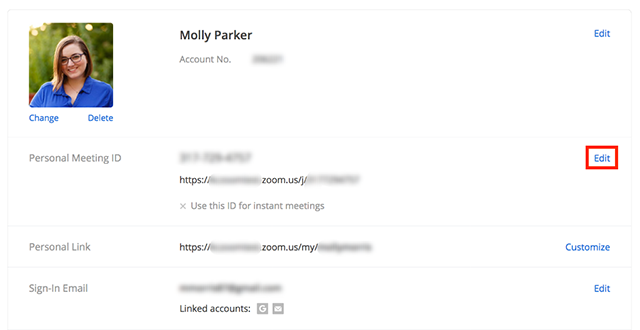

Record the meeting automatically: selecting this allows you to record on your computer or to the cloud.Enable waiting room: If you select “Enable waiting room” participants can join the meeting in a holding area and must be let into, or dismissed from the meeting by the teacher.Please take the time to review Zoom Best Practicesto ensure your meetings are safe and secure.This is fine if you only use Zoom a few times in a course and is the most secure way to hold meetings. By letting Zoom generate a unique meeting ID, his is like being in a different room for each class, and only that link will get you into the current meeting.Every meeting after this can be entered by selecting the “Previous Meetings” tab and selecting the link there. For your first meeting, the link will be in the “Upcoming Meetings” tab. This being said, it is best to let Zoom generate a unique meeting ID for most meetings scheduled within Canvas courses. In alignment with Zoom best practices (found here), we recommend that you do NOT use your personal meeting room unless it is with a trusted colleague, friend, or family member. Use personal meeting ID: You have a choice of using your permanent personal meeting ID or letting Zoom create a unique meeting ID for each meeting.Mute participants upon entry: similar to the video setting but affects audio as well.Enable join before host: this allows participants to enter early and set up their video/mics and talk with each other before the teacher joins.This can be useful if you use your personal meeting ID and want to make sure that only people in this course join the meeting. Require meeting password: use this to create a password to join.This keeps background noise to a minimum as people enter the meeting. Video/audio: best practice is to start with video off and let participants turn on video (the default).Time Zone: the default is Central time.The meeting date and time determines the Tab where a meeting link will be found. Zoom will not end a meeting when the duration is reached. These are primarily informational for the participants.


When/Duration: Set a time and duration for the meeting.Topic/Description: Enter a topic or description.When you are ready to schedule a Zoom meeting in your course, click on the Zoom link in the left-side navigation menu, and then click on "Schedule a New Meeting." This tutorial gives an overview of scheduling and accessing meetings via the Zoom link added to the course menu. Scheduling a meeting within your course allows you to create a virtual meeting space that all of the users in your course are automatically invited to. Please note: This tutorial assumes that you have updated your Zoom account as detailed in the Adding Zoom to your Course Navigation Menu article that can be accessed by following the link.


 0 kommentar(er)
0 kommentar(er)
